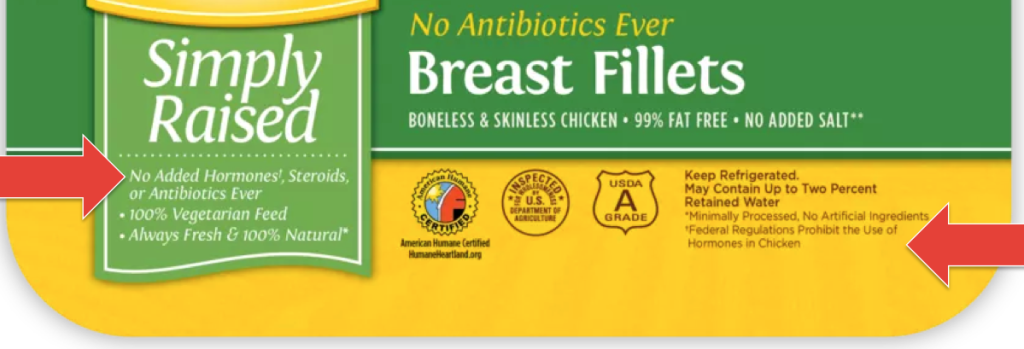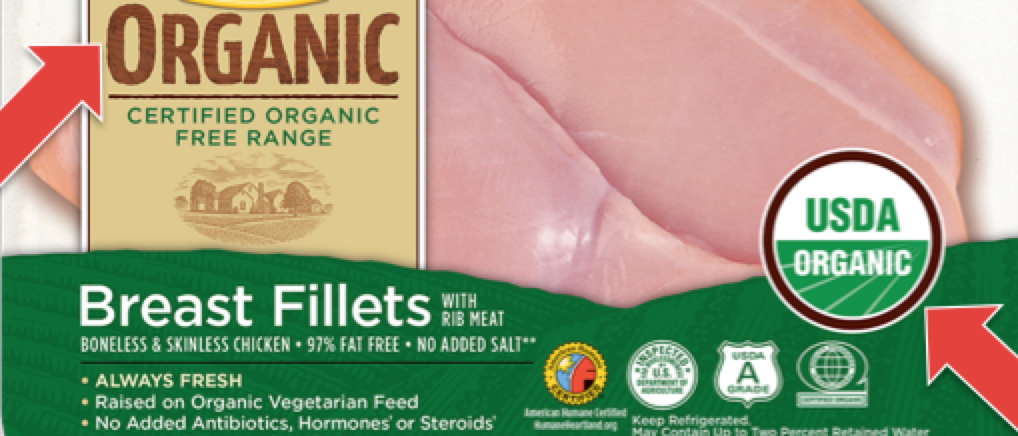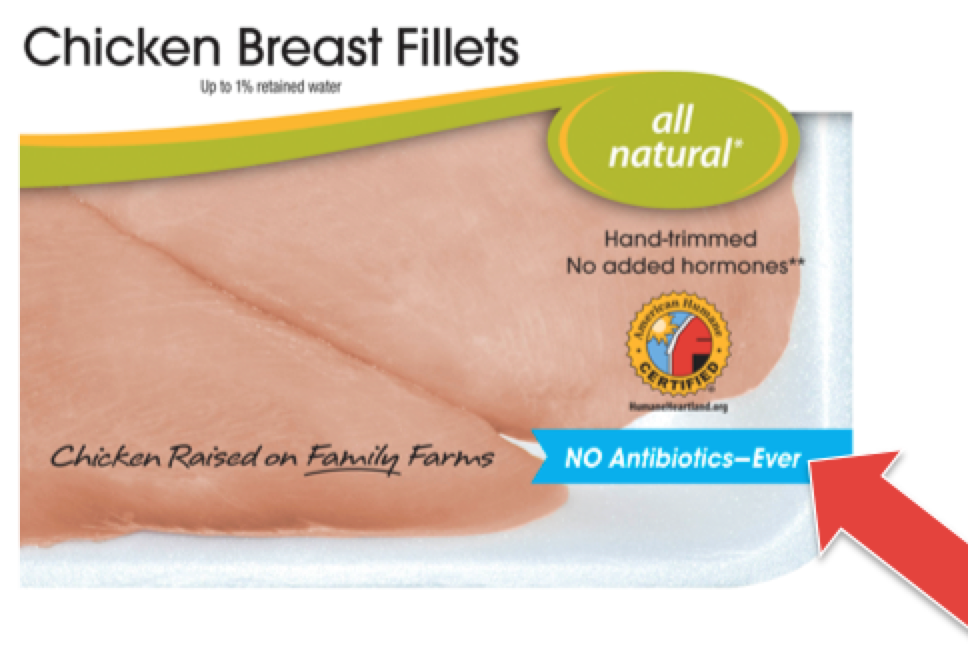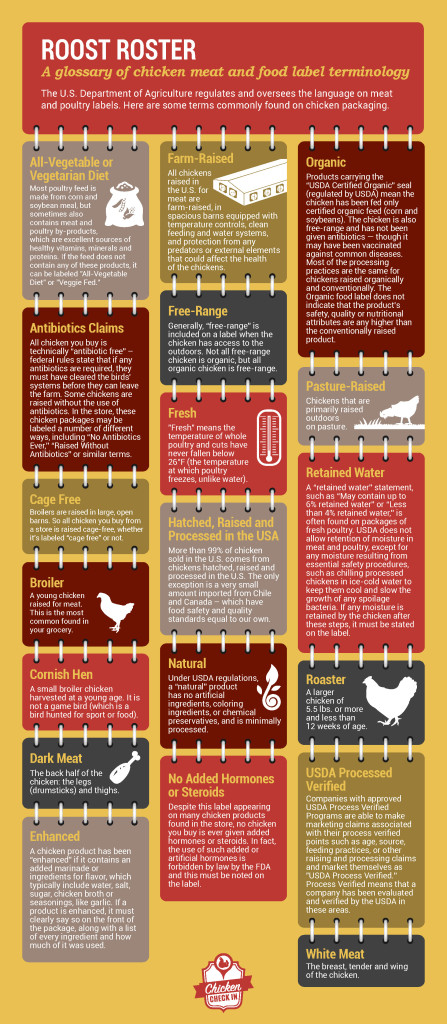5 Confusing Chicken Labels (and What They Actually Mean)
Chicken companies are in the business of providing choice. The amazing variety of chicken products today allows people to choose products that take into account many factors, including taste preference, personal values and affordability.
But let’s face it—food labels are confusing, especially when it comes to chicken products. In fact, a survey by the National Chicken Council found that nearly two-thirds (62 percent) of consumers said chicken labels and packaging were confusing.
All these labels lead many to wonder, what does chicken labeled “antibiotic-free” or “organic” or “no hormones added” actually mean? Does it affect the taste? The quality? What about the price? Is it even all true?!
To clear up some common chicken labeling misperceptions, here is a breakdown of the five most confusing labels on chicken products and what they actually mean.
1. No Added Hormones or Steroids
Despite this label appearing on many chicken products found in the store, no chicken you buy is ever given added hormones or steroids.
In fact, the use of such added or artificial hormones is forbidden by law by the FDA and this must be noted on the label. Ever notice the asterisk with that label? Take a closer look on any chicken package with that label and you’ll find an explanation stating that federal regulations prohibit the use of hormones and steroids in the production of any poultry raised in the United States.
2. Cage-free
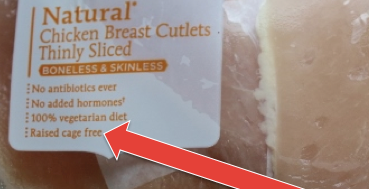
This is one of the most confusing and misleading food labels you’ll find on chicken products. No chicken meat you buy is raised in a cage. So every chicken meat product you purchase, with the exception of eggs, is cage-free by default.
The majority of chickens raised for meat in the U.S. live in large, open structures called houses where they are free to walk around, commune with other chickens, rest and eat and drink when they want. (Others, including free-range chickens, have varying access to the outdoors) These houses are equipped with advanced climate controls that keep the chickens’ habitat precisely within the comfortable range they prefer, regardless of outside temperatures.
3. Free-range
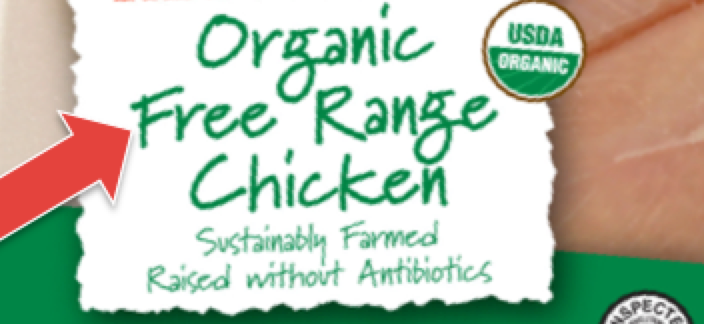
There’s no precise federal government definition of “free range,” so the U.S. Department of Agriculture (USDA) approves these label claims on a case-by-case basis. The USDA generally permits the term to be used if chickens have access to the outdoors for at least some part of the day, whether the chickens choose to go outside or not. In practice, most chickens stay close to water and feed, which is usually located within the chicken house, to keep the feed and water free of bacteria and away from predators, rodents and insects that might be drawn to it.
Chicken labeled as “organic” must also be “free-range,” but not all “free-range” chicken is also “organic.”
4. Organic
Chicken products carrying the “USDA Certified Organic” seal or label (regulated by USDA) mean the chicken has been fed only certified organic feed (corn and soybeans).
The chicken is also free-range (has access to the outdoors for at least some part of the day) and has not been given antibiotics — though it may have been vaccinated against common diseases. The organic food label does not indicate that the product’s safety, quality or nutritional attributes are any higher than the conventionally raised product.
Once the chicken goes to the processing plant, most of the practices are the same for chickens raised organically or conventionally. The major difference is that in processing chicken that is labeled organic, any processing aids or sanitizers used must also be approved for organic use.
5. Antibiotics
Finding ways to raise chickens without any antibiotics is the latest example of an industry committed to innovation, producing a wide range of chicken products for a wide range of consumers.
The administration of antibiotics is only one FDA-approved tool to keep chickens healthy. It is not a silver bullet. Companies use a variety of management tools to keep birds healthy including: more individualized nutrition plans; the use of probiotics and vaccines; barns with better air circulation and temperature controls; and additional training programs and education efforts for farmers and service technicians.
But just like people, chickens sometimes get sick, and treating illness is a responsible part of animal care. When this happens, farmers work with animal health experts and veterinarians to determine if an antibiotic is needed.
A “No Antibiotics Ever” or “Raised without Antibiotics” label is typically only one of a company’s product lines. Some flocks on a no antibiotic program may get sick, just like other flocks, and some have to be treated with antibiotics. These flocks that have been treated with antibiotics are no longer eligible to be marketed as “No Antibiotics Ever” or “Raised without Antibiotics.” A no antibiotics program is not a magical program for producing disease-free birds. Rather, it’s a program which intends to raise birds without antibiotics and labels those which are successfully raised without antibiotics as such. Those chickens that must be treated with antibiotics are labeled with another designation.
Even if a chicken is given antibiotics in the course of its life to treat or prevent disease, all chicken you buy is technically “antibiotic free” – federal rules state that if any antibiotics are required, they must have cleared the birds’ systems before they can leave the farm.
Curious about other common chicken labels?
Beyond these 5 chicken labels, there are many more labels you commonly see on chicken packages. From “natural” to “USDA processed verified, ” the Roost Roster infographic provides a comprehensive glossary of chicken meat and food label terminology. This infographic explains some of the most common labeling terms on chicken packaging so you can feel more informed the next time you buy chicken for your family.
